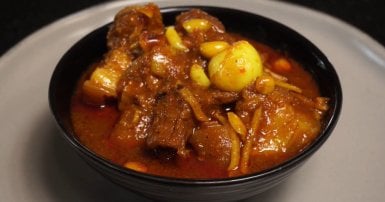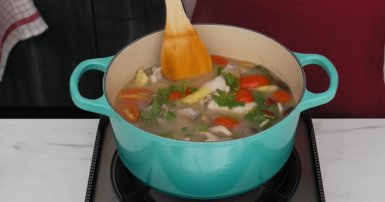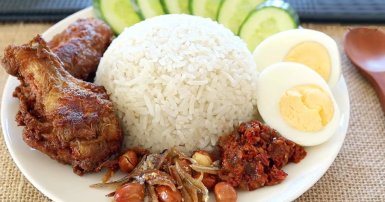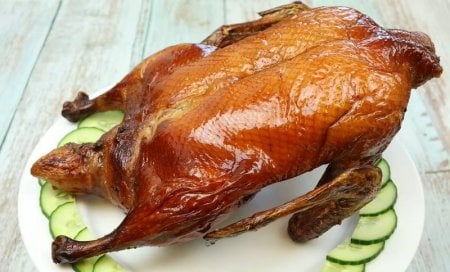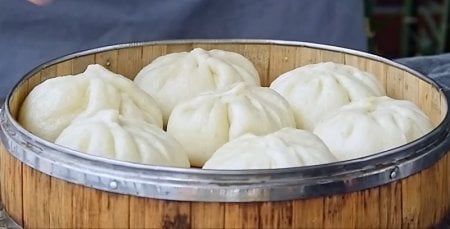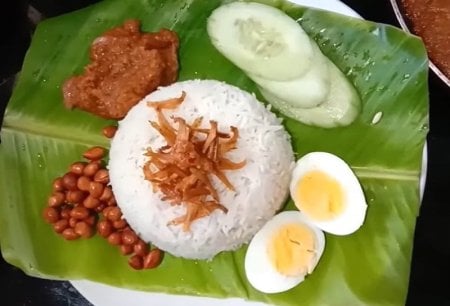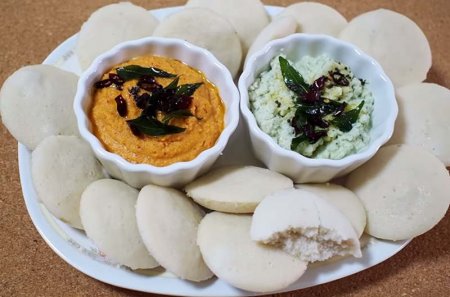Thai noodle mastery unfolds as a captivating symphony of flavors and textures, unveiling the essence of the nation's culinary artistry. Silken strands or chewy ribbons, each noodle creation is a canvas painted with the richness of Thailand's diverse culinary heritage. A dance of savory, sweet, and tangy notes envelops stir-fried noodles, while aromatic spices infuse boat noodles with an unparalleled depth. Thai noodle alchemy extends beyond tradition, with each craft narrating the tale of culinary finesse. A sensory journey awaits, promising not just a meal but an extraordinary exploration of Thailand's unique and captivating noodle narratives.
Pad Thai
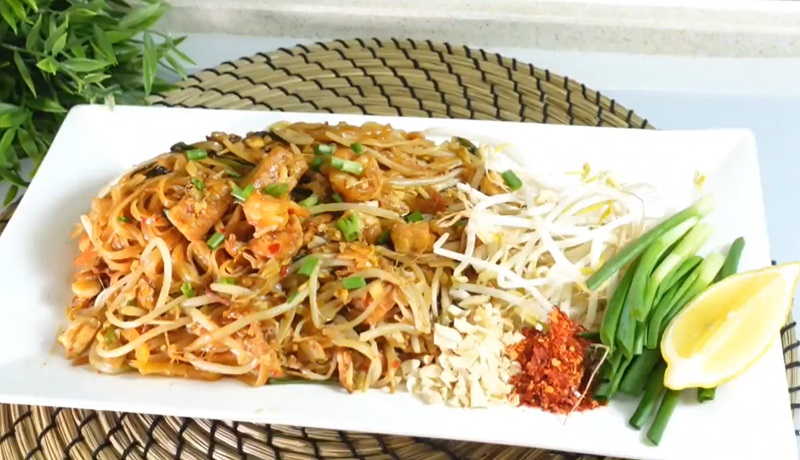
Pad Thai is a renowned stir-fried rice noodle dish widely enjoyed as a popular street food in Thailand, showcasing the country's vibrant culinary landscape. This flavorful creation combines a scrambled egg, rice noodles, peanuts, shrimp, and bean sprouts, all expertly cooked in a wok. The dish features a delightful medley of ingredients, including chopped firm tofu, stir-fried rice noodles, and eggs. Its distinctive taste arises from the infusion of garlic, tamarind juice, shallots, fish sauce, dried shrimp, and occasionally red chili pepper and palm sugar. Pad Thai is served with lime wedges and often garnished with crushed roasted peanuts. This versatile dish may also incorporate various vegetables such as bean sprouts, raw banana flowers, garlic chives, and preserved radish, along with additional protein sources like chicken, fresh shrimp, crab, squid, or other meats, contributing to its widespread popularity and diverse flavor profile.
Khao Soi
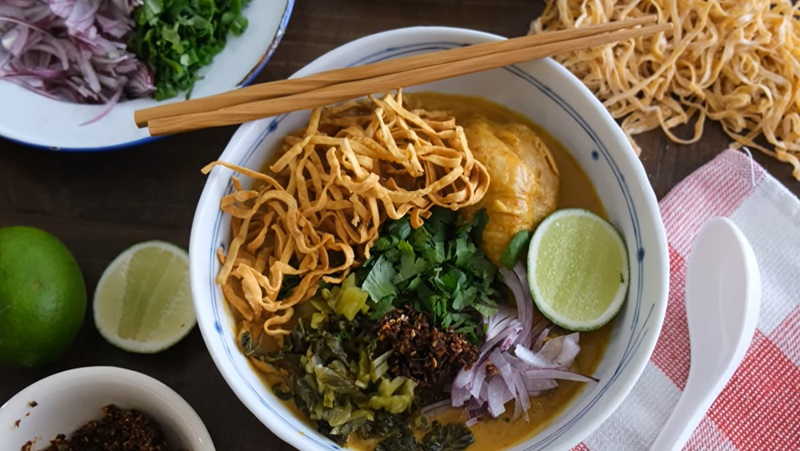
Khao soi is a popular Thai noodle dish that originates from the northern region of Thailand. It is a rich and comforting curry noodle soup that is bursting with flavors. The dish typically consists of egg noodles, tender slices of meat (such as chicken or beef), and a fragrant curry broth. The curry broth is made from a blend of aromatic spices, including turmeric, coriander, and chili. It is then simmered with coconut milk to create a creamy and slightly sweet base. The noodles are cooked separately and added to the broth along with the meat. What sets khao soi apart from other noodle dishes is the array of toppings that are served alongside it. These can include crispy fried noodles, pickled mustard greens, shallots, lime wedges, and cilantro. These toppings add a wonderful texture and freshness to the dish. Khao soi is a harmonious combination of flavors and textures that is both comforting and satisfying. It is a must-try for anyone looking to explore the diverse and delicious world of Thai cuisine.
Pad See Ew
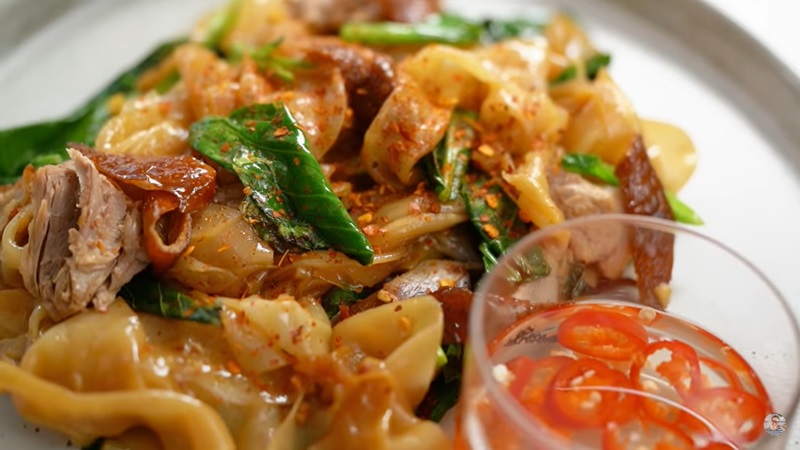
Pad see ew is a popular Thai noodle dish that is both delicious and satisfying. It is a stir-fried noodle dish made with wide rice noodles, commonly known as "sen yai," which are cooked until they are slightly chewy. The dish typically includes a variety of ingredients such as sliced meat or tofu, vegetables like Chinese broccoli or bok choy, and eggs. The noodles are stir-fried in a flavorful sauce made from a combination of soy sauce, oyster sauce, and a hint of sweetness from palm sugar. This sauce gives the dish a rich and savory flavor that is balanced with a touch of tanginess from vinegar. The noodles absorb the sauce, creating a perfect blend of flavors in every bite. Pad see ew is often garnished with a sprinkle of white pepper and served with a side of fresh lime wedges and chili flakes for those who desire an extra kick. The combination of tender noodles, succulent meat or tofu, and crisp vegetables make this dish a popular choice among Thai food lovers. Whether you are a fan of stir-fried noodles or looking to try something new, pad see ew is a must-try Thai dish that will leave you craving for more.
Drunken Noodles
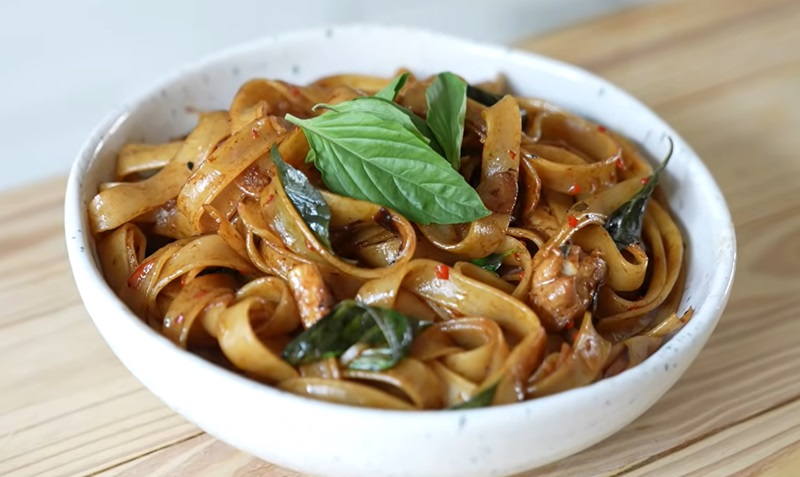
Drunken noodles, also recognized as Pad Kee Mao, stand out as a widely embraced Thai noodle delicacy celebrated for its vibrant and intense flavors. Initially conceived as a fiery stir-fry without noodles, this dish boasts a foundation of fresh chilies, garlic, shrimp paste, shallots, and holy basil for garnish. Its evolution into a noodle-based version involved the incorporation of broad rice noodles, accompanied by a symphony of seafood, soy sauce, fish sauce, fresh black pepper pods, garlic, meat, chili, oyster sauce, and holy basil, contributing to its distinct spiciness. The adaptable nature of the recipe allows for variations, with some renditions incorporating eggs. The fusion of these diverse ingredients culminates in a tantalizing and dynamic culinary experience, characteristic of the beloved Drunken noodles.
Boat Noodles
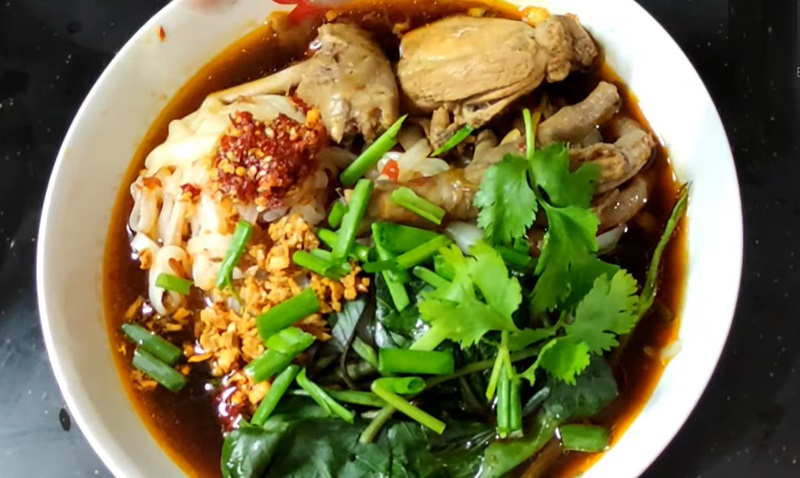
Boat noodles, or kuai-tiao ruea, represent a beloved Thai noodle dish originating from the country's floating markets, offering a flavorful treat for noodle enthusiasts. Traditionally served by vendors on small wooden boats navigating canals, the dish showcases rice noodles in a savory broth made from beef or pork bones, spices, and herbs. Achieving rich and complex flavors involves simmering the broth for hours, allowing ingredients to harmonize. What sets boat noodles apart is the diverse array of toppings and condiments. Thinly sliced beef or pork, meatballs, and organs like liver or tripe provide varied textures and flavors. Fresh herbs such as cilantro, Thai basil, and bean sprouts contribute freshness. Accompanying condiments like chili flakes, lime juice, and fish sauce allow customization of spiciness and tanginess. Boat noodles promise a satisfying and comforting experience with their rich broth, tender meats, and vibrant toppings, making this Thai specialty a delightful choice for those craving an exceptional noodle dish.
Bakmi
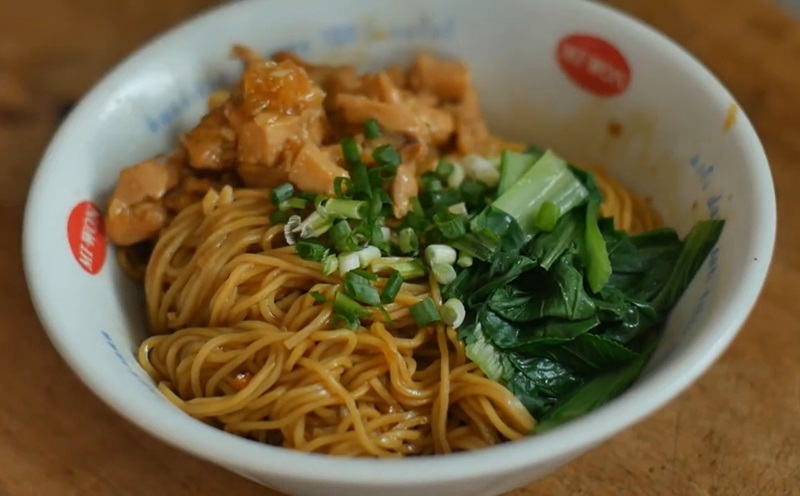
Bakmi, a delectable noodle dish cherished by locals and tourists alike, originates from the Chinese culinary tradition and has become a popular dish in Thai cuisine. These wheat-based noodles, often known as mi kuning or 'yellow noodles,' exhibit a pale yellow hue and are typically seasoned with soy sauce, complemented by savory pork toppings. The preparation involves finely ground wheat, occasionally enriched with eggs to create mi telur (egg noodle) dough, which is then processed into noodle strings. The traditional method of crafting bakmi involves pulling the dough multiple times, coated with flour, akin to the technique used in making lamian. For serving, bakmi is commonly boiled, and when destined for soups, it is boiled separately from the broth. The noodles are infused with animal fats, sourced from pork, chicken, or beef, and adorned with various toppings, such as slices of char siu (barbecued pork), Chinese green vegetables, and a flavorful bowl of broth.
Rat Na
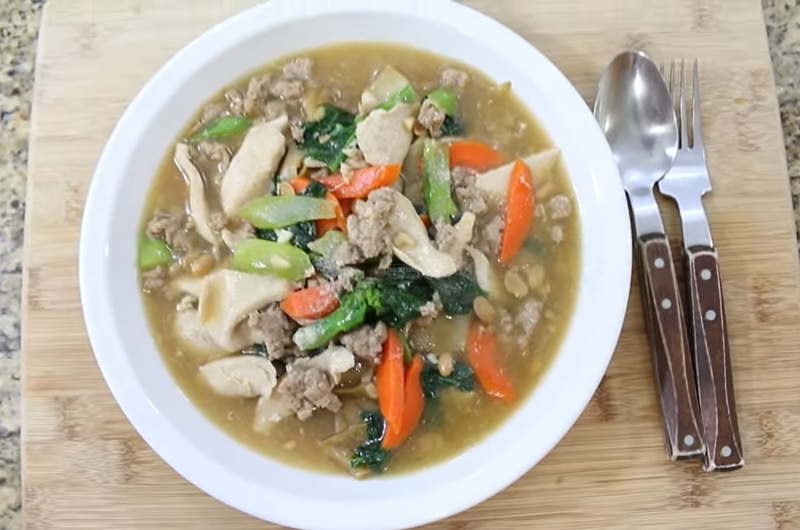
Rat na is a popular Thai noodle dish that is sure to satisfy any craving for a delicious and comforting meal. This dish typically consists of wide rice noodles stir-fried with a variety of ingredients, including your choice of meat or seafood, vegetables, and a flavorful sauce. The noodles are soft and chewy, perfectly complementing the tender and juicy pieces of meat or seafood. The vegetables, such as broccoli, carrots, and baby corn, provide a crunchy texture and add a vibrant touch to the dish. The sauce is a key component, as it brings all the flavors together. It is usually made from a combination of soy sauce, oyster sauce, garlic, and other aromatic spices. Rat na can be customized to suit individual preferences. It can be made with chicken, beef, pork, or shrimp, allowing you to choose your favorite protein. Whether you prefer a mild or spicy flavor, this dish can be adjusted to your liking by adding chili peppers or chili sauce. Overall, Rat na is a mouthwatering Thai noodle dish that offers a perfect balance of flavors and textures. Whether enjoyed at a local street food stall or a fancy restaurant, it is a must-try for any Thai cuisine enthusiast.
Mi Krop
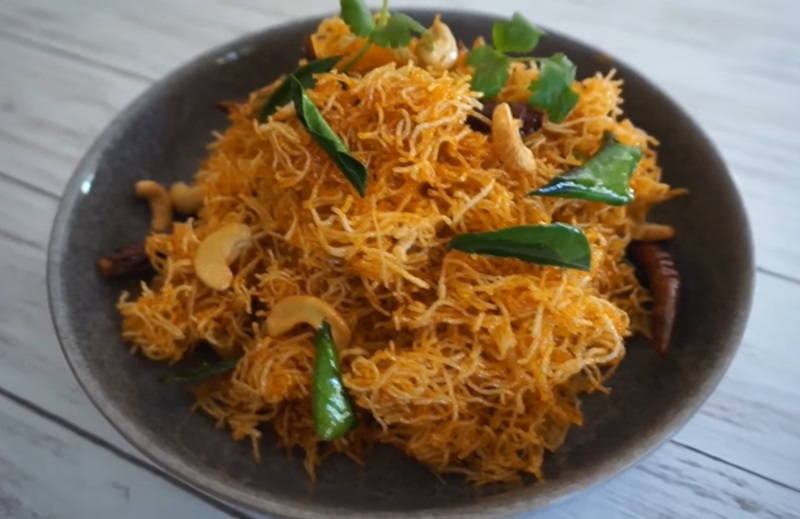
Mi krop, or mee krob, is a delightful Thai culinary creation featuring deep-fried noodles (rice vermicelli) bathed in a sweet and sour sauce, with "mi krop" translating to "crisp noodles." The sauce carries a zesty, sour tang, often derived from the peel of som sa, a Thai citrus fruit akin to citron. This delectable dish comprises crunchy, fried thin rice noodles intertwined with options like fried tofu, shrimp, pork, or a delightful combination of these. The sauce, a harmonious blend of tomato paste, chilis, lemon or lime juice, fish sauce, kaffir lime leaves, and sugar, contributes to its vibrant flavor profile. Mi krop's appeal extends further with garnishes such as cilantro, chilis, scallions, bean sprouts, and strips of fried egg, adding layers of texture and visual appeal to this Thai masterpiece.
Nam Ngiao
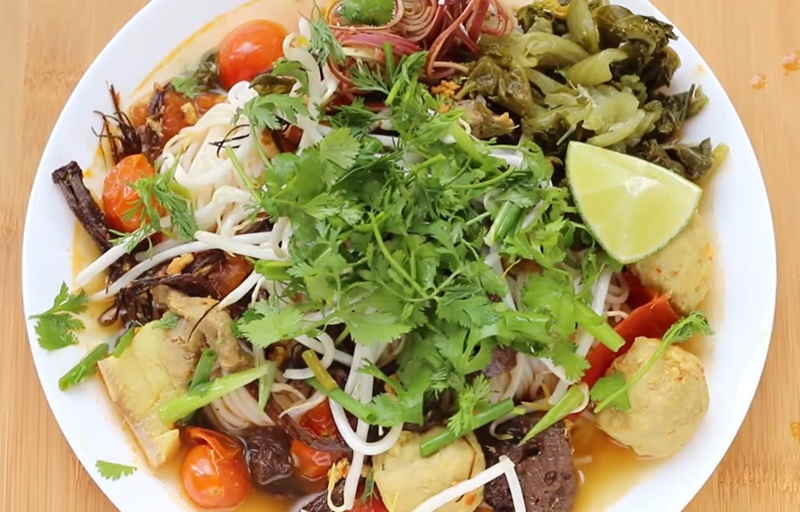
Nam ngiao, a traditional Thai noodle dish originating from the northern region of Thailand, is a soup featuring fermented rice vermicelli known as khanom chin, although kuaitiao or other noodles can be used. The main components include beef or pork and diced curdled blood cake, providing a unique texture. Chopped tomatoes lend a delightful sour note, while crispy roasted or fried dry chilies and garlic add a touch of spiciness. Central to the distinctive flavor of nam ngiao is thua nao, a fermented soybean product widely used in northern Thai cuisine, with shrimp paste occasionally serving as a substitute. The dish is often accompanied by pork rinds, enhancing its overall texture. This authentic Thai creation showcases a harmonious blend of flavors, combining sour, spicy, and savory elements to create a satisfying and culturally rich culinary experience.
Kuaitiao Khua Kai
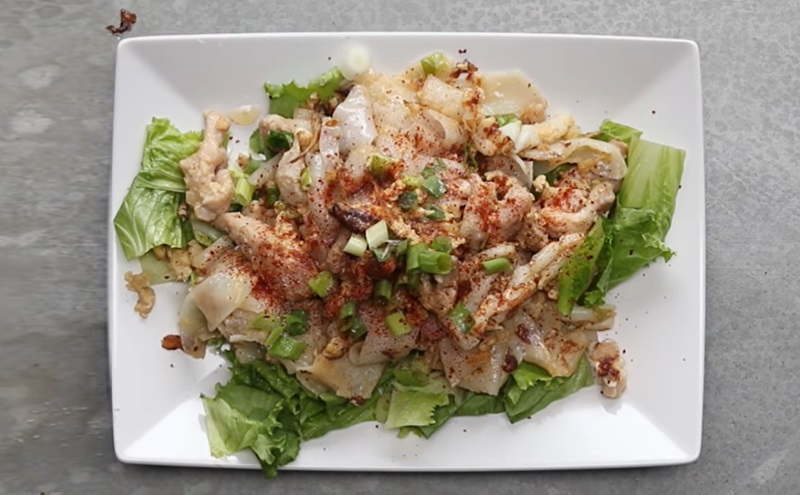
Kuaitiao khua kai is a delicious Thai noodle dish that is packed with flavors and textures. It is a stir-fried noodle dish that typically consists of wide rice noodles, tender chicken pieces, and a variety of vegetables. The dish is cooked in a flavorful sauce made from soy sauce, oyster sauce, garlic, and other seasonings. The highlight of kuaitiao khua kai is the smoky flavor that comes from the stir-frying process. The noodles are quickly cooked over high heat, resulting in a slightly charred and smoky taste that adds depth to the dish. Along with the noodles, the chicken is also stir-fried until it is cooked through and infused with the rich flavors of the sauce. Vegetables such as Chinese broccoli, bean sprouts, and carrots are commonly added to kuaitiao khua kai, providing a refreshing crunch and balance to the dish. It is often garnished with fresh cilantro and a squeeze of lime juice to add a bright and tangy element. Kuaitiao khua kai is a popular street food in Thailand, loved for its combination of flavors, textures, and aromas. It is a satisfying and comforting noodle dish that is perfect for lunch or dinner.
Sukhothai Rice Noodles
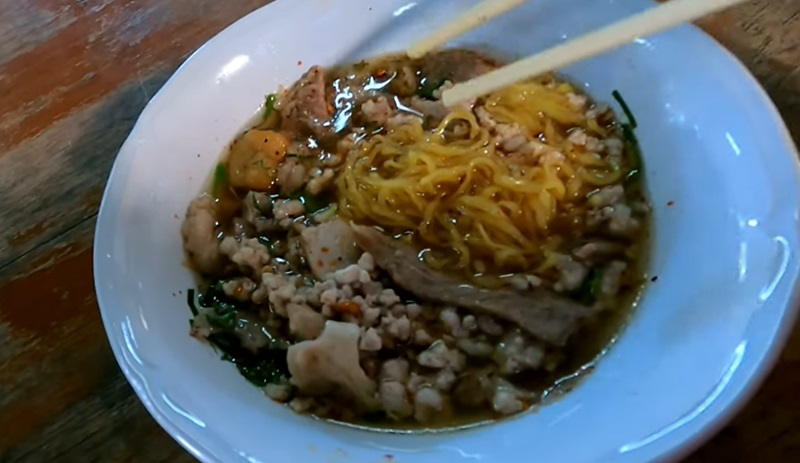
Sukhothai rice noodles, a distinctive Thai rice noodle soup (kuai tiao), presents a flavorful and aromatic dining experience. This culinary delight features a combination of rice noodles, typically using the slender "sen lek" variety, bathed in a broth composed of sliced pork or a sweet pork base. Toppings include ground pork and crackling, contributing to the dish's rich texture. The ensemble is further elevated with small portions of salted turnip, thin slices of green beans, and ground peanuts, creating a harmonious blend of flavors. The palate is treated to a sweet and mellow essence, complemented by the invigorating aroma of lime. To enhance the taste, the dish is dressed with fish sauce and ground chili, offering a perfect balance of sweetness and spice. Sukhothai rice noodles can be savored on their own or enjoyed with a delectable soup, showcasing the diversity and depth of Thai culinary craftsmanship.
Miang Noodles

Miang Noodles, a local delicacy from the Chonburi province in Thailand, is a flavorful and nutritious snack wrapped in various fillings, showcasing the rich diversity of ingredients from all five food groups. This savory treat is renowned for its health benefits, as it incorporates vegetables and a variety of essential nutrients. Crafting Miang noodles is a straightforward process, making it suitable for both homemade snacks and commercial sale. The preparation involves combining big flat noodles with chive leaves, grilled mackerel, roasted peanuts, dried shrimp, eggs, and bean sprouts, all wrapped into a square shape. While the basic components remain consistent across villages, the unique taste of Miang sauce varies based on individual preferences. The Miang Noodle Sauce, a key element, coriander, encompasses chili pepper, sugar, key lime, fish sauce, and water, contributing to the dish's exquisite balance of flavors. Miang Noodles stand as a delightful and customizable Thai culinary experience, marrying convenience with nutritional richness.
Yam Khanom Chin
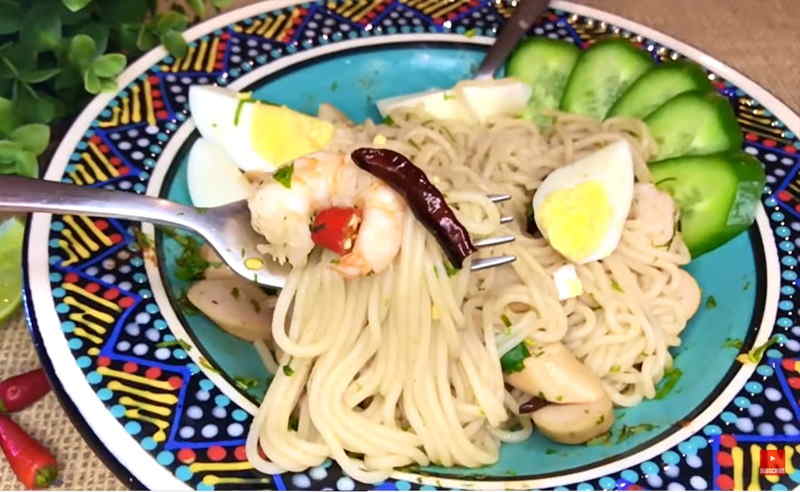
Yam Khanom Chin stands out as a popular Thai noodle dish, offering an explosion of vibrant flavors and textures. The star of the dish is khanom chin, thin rice noodles crafted from fermented rice flour, contributing a subtly sour taste and a delicate, chewy texture. Served alongside an array of fresh vegetables such as cucumbers, bean sprouts, and lettuce, the dish provides a refreshing crunch. To elevate the flavors, a delectable sauce, comprising fish sauce, lime juice, garlic, and chili peppers, is generously drizzled on top, introducing a perfect balance of tanginess and spiciness. Fragrant herbs like cilantro and mint serve as the finishing touch, infusing each bite with a burst of freshness. Some variations may include boiled eggs, fried fish, or shredded chicken, offering additional protein. Overall, Yam Khanom Chin is a delightful and gratifying Thai noodle dish that seamlessly blends diverse flavors and textures, creating an unforgettable culinary experience.


